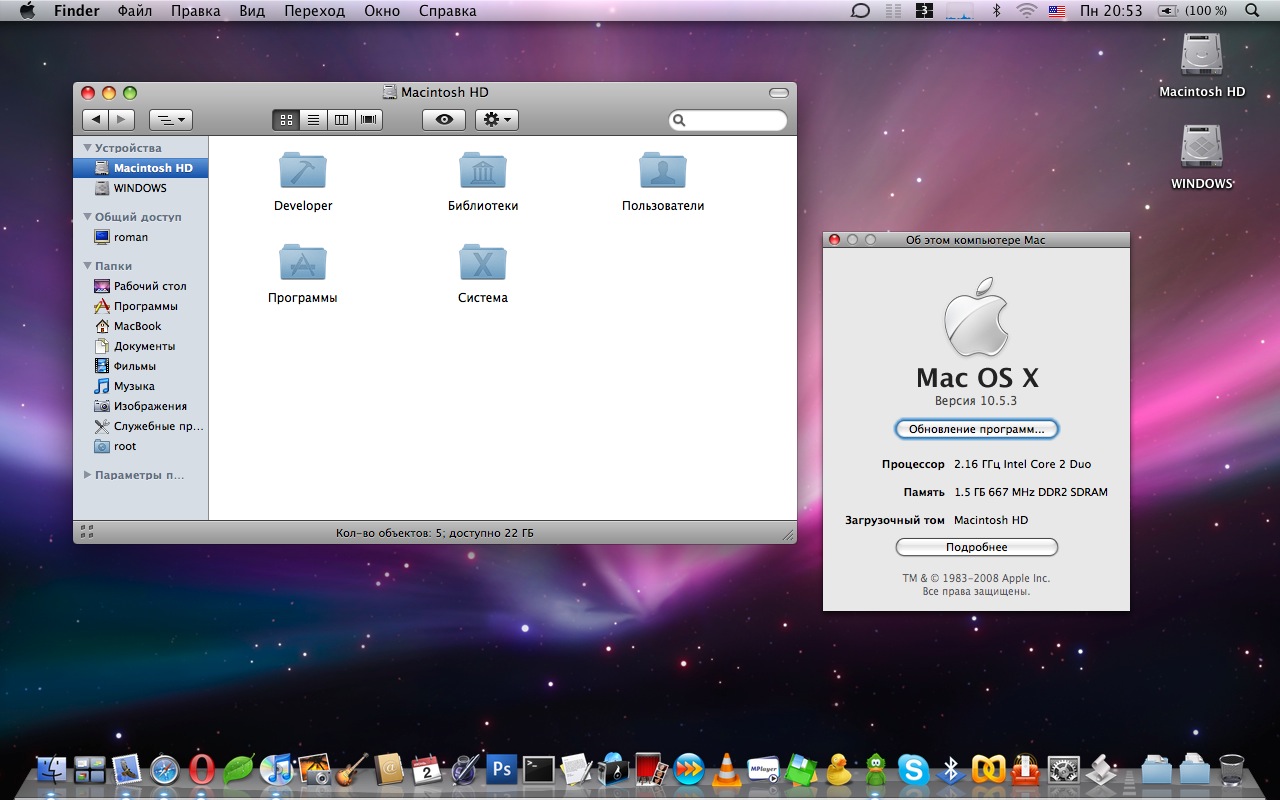

- #UPDATE MAC OS X 10.5 8 TO 10.6 UPGRADE#
- #UPDATE MAC OS X 10.5 8 TO 10.6 SOFTWARE#
- #UPDATE MAC OS X 10.5 8 TO 10.6 DOWNLOAD#
opt/local/lib/gcc46/libstdc++.6.dylib (compatibility version 7.0.0, current version 7.15.0) System/Library/Frameworks/amework/Versions/A/IOKit (compatibility version 1.0.0, current version 275.0.0) System/Library/Frameworks/amework/Versions/A/Cocoa (compatibility version 1.0.0, current version 12.0.0) System/Library/Frameworks/amework/Versions/A/Carbon (compatibility version 2.0.0, current version 136.0.0) I think I must tell it, in case it could interfere with the applications).Īs I discovered otool here is the log returned Valkeas-Mac:MacOS root# otool -L (compatibility version 0.0.0, current version (compatibility version 0.0.0, current version 1.7.3) Mac OS-X 10.5.8 (there is some dev tools installed.I use the following to compile my project: How do I specify the targeted SDK in Cmake ? (Are the used Cmake commands not sufficient ?)
#UPDATE MAC OS X 10.5 8 TO 10.6 DOWNLOAD#
Just download and run.ĭoes anybody can tell my what I'm missing here ? (I don't really feel fluent with the OS-X methods and organisation so I could have missed something very basic, don't fear to be crude ^^). Indeed the goal is to make it runs on the second Mac (and all Mac using 10.5+) without changing anything on it. The libstdc++.dylib file, links to libstdc++.6.0.9.dylib on the Mac used to compile the application whereas it links to libstdc++.6.0.4.dylib on the Mac used to test portability.īut as I told it to use the MacOSX10.5.sdk I though it would use the libstdc++.6.0.4.dylib at compile time, so it can run on the Mac installed with 10.5

app directly it returns the following errors: MacBook-2:~ root# /var/root/Desktop/MyProject.app/Contents/MacOS/MyProject exit ĭyld: lazy symbol binding failed: Symbol not found: _ZSt16_ostream_insertIcSt11char_traitsIcEERSt13basic_ostreamIT_T0_ES6_PKS3_i But if I run the executable file included in the. app it try to start and finally the Icon disappear from the menu bar and that's all. needed into the Application.app bundle and it does start fine on this Mac OS-X 10.6īut when I transfer the project on my old laptop installed with Mac OS-X 10.5.8 I'm unable to run the application. I included all the required Components, Frameworks, Plugins etc. It was hard (probably because I a new OSX user) but it finally compiled it without error. I succeeded in compiling my project on Mac OS-X 10.6 (Snow Leopard) using GCC 4.6.0 (because I needed C++0x). Only you can decide, after careful consideration, what is in your best interests, as going backwards sometimes is not an option (as is the case with Apple's iOS operating system).I'm trying to port a C++ project using C++0x and Ogre on Max OS-X and I encounter a portability problem between OS-X versions.
#UPDATE MAC OS X 10.5 8 TO 10.6 SOFTWARE#
The temptation and immediate compulsion to click "update" or "upgrade" as soon as it is available or one receives notice of it is definitely not considered a "best practice," regardless of what most users are doing or even what the software or hardware vendor recommends that you do. There is nothing wrong with remaining at a version of a stable and mature operating system that is perhaps getting long in the tooth, and this is especially poignant with older hardware if after upgrading you discover that you have lost something that you needed. The affirmative answer to the question should be along the lines of:ġ) there are security concerns that you hope to resolveĢ) there are software bugs that you hope to resolveģ) there are new features available and you wish to take advantage of them After all, what isn't broken cannot be fixed, and often "fixing" something that isn't broken will indeed lead to the discovery at the worst imaginable moments that essential functionality is broken or no longer exists. Mac OS X 10.5 Leopard is a mature and stable operating system that has some very interesting and particular features that are not available in most of the more recent OS X releases, including the Classic Environment and a transparent emulation layer that both allow you to run (possibly expensive or irreplacible) software that ran on earlier Mac system software and fundamentally different hardware, respectively, before Apple switched to PPC, released the first versions of Mac OS X, and then switched to x86 based hardware.
#UPDATE MAC OS X 10.5 8 TO 10.6 UPGRADE#
Before you upgrade you should deeply consider the question "why upgrade?"


 0 kommentar(er)
0 kommentar(er)
